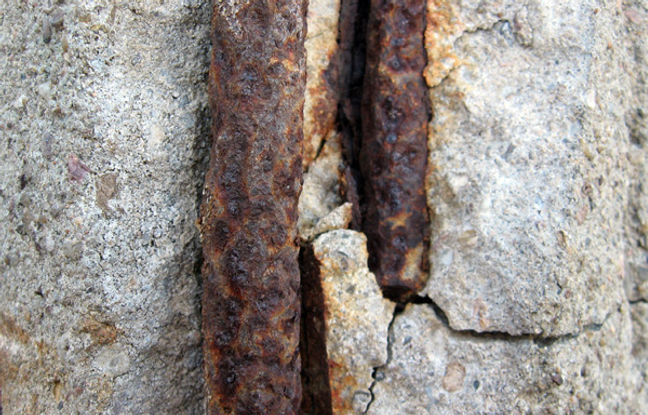Why Using Proper Coatings ?
Metal Corrosion
Corrosion is the deterioration of a metal as a result of chemical reactions between it and the surrounding environment. NACE (National Association of Corrosion Engineers) - a none-profit professional organization for the corrosion control industry whose mission is to equip society to protect people, assets and the environment from the adverse effects of corrosion - study estimates global cost of corrosion at $2.5 trillion annually.
The corrosion of steel is an electrochemical process that requires the simultaneous presence of moisture and oxygen. Essentially, the iron in the steel is oxidized to produce rust, which occupies approximately six times the volume of the original material.
Corrosion in Concrete
In concrete corrosion is initiated when materials that are harmful to steel, such as water and gases like CO2 and chloride ion from de-icing salt or marine atmosphere, start to penetrate concrete and reach the steel reinforcement and results in the creation of rust. Since rust occupies a larger volume than steel, it exerts internal pressure which causes the surrounding concrete to crack and become damaged. These cracks make their way to the surface of the concrete which causes even more CO2 and chloride to penetrate the concrete and speed up the process of corrosion. Corrosion in reinforced concrete is also named as silent killer because it destroys the concrete and repairing damaged concrete is not absolutely a routine, easy and effective process.The corrosion of steel is an electrochemical process that requires the simultaneous presence of moisture and oxygen. Essentially, the iron in the steel is oxidized to produce rust, which occupies approximately six times the volume of the original material.
Erosion is a mechanical damage of concrete. Erosion is happened when mechanical damage to concrete and metal is occurred by the waves of water with gravel and sand carried by them and the fine particles in the air which is carried by wave.
Using Cheap and Improper Coatings
Using cheap paints and coatings is in some cases the choice of industry owners, and many industries consider COST as the main criteria for choosing coatings. But unfortunately not long after, the effects of structural damage appear.
Cheap, low-quality coatings cover the surface, but do not stop the process of degradation and corrosion, resulting in hidden corrosion and degradation occurrence . Industry owners usually notice problems when it is too late and their structures are damaged. If they notice quickly, removing inappropriate coatings and applying appropriate ones can resolve the problem, but if the degradation has developed (especially in the case of concrete where reinforcement corrosion and internal degradation have begun), the damaged structure must be repaired which would be costly. Considering this, the use of cheap coatings is not economical at all and over time will be much more expensive than using high quality coatings. In other words, not using cheap coatings is much economical than using them .
In some cases, cheap low-quality coatings are damaged locally , which with calculating repairing of damaged spots have additional costs to be considered .
Considering the above, to compare the cost of coatings, useful service life is a very important and essential item which will make the more expensive higher quality coatings more economical.








Using Appropriate Coatings
By applying an appropriate Protective Coating which can withstand on concrete and metal in severe environments, the structures age will increase significantly. As this reason the incurred funds for these coatings could be considered as INVESTMENT rather than COST.
These coatings will protect concrete and metal against both corrosion and erosion by isolating them from all above mentioned factors (moisture, gases and particles) resulting in saving billions of dollars per year.
Some examples of difference between PetroChemCoat coatings as long life and regular coatings are as follows:



